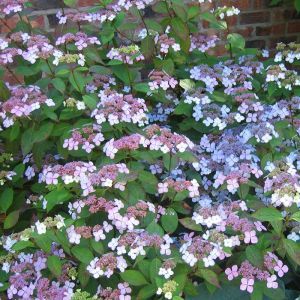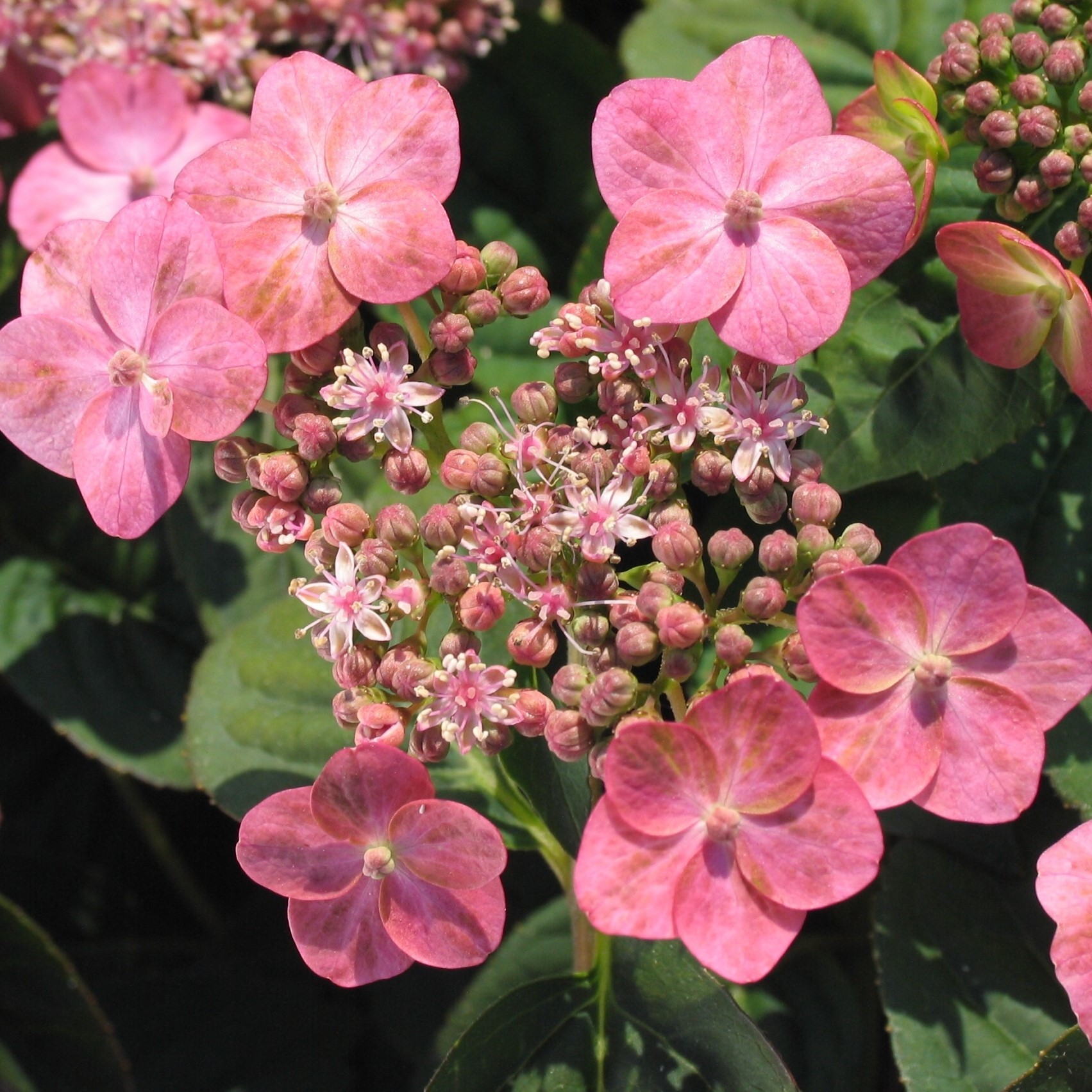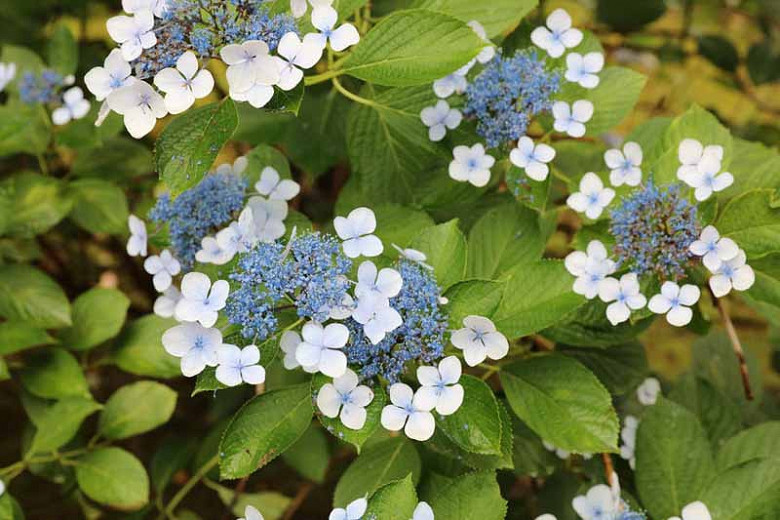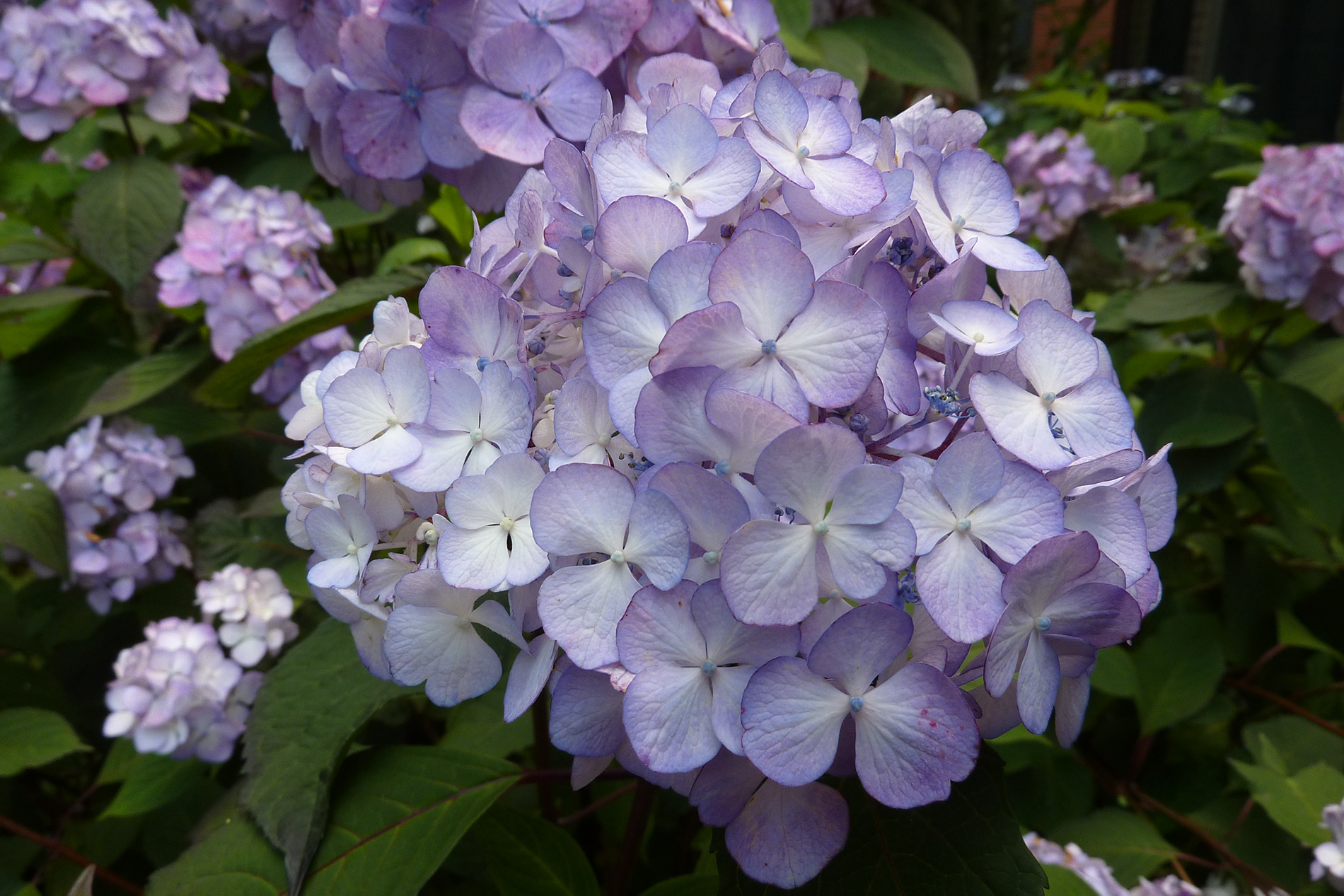Hydrangea Serrata: The Easytogrow Hydrangea That Will
Hydrangea Serrata: The Easy-to-Grow Hydrangea That Will Wow Your Garden
Hydrangeas are some of the most popular flowering shrubs in the world, and for good reason. They come in a wide variety of colors, sizes, and shapes, and they can add a touch of elegance to any garden. But if you're looking for a hydrangea that is both easy to grow and stunningly beautiful, then you should consider Hydrangea serrata.
Hydrangea serrata, also known as the mountain hydrangea, is a native of Asia. It is a smaller shrub than some other types of hydrangeas, typically growing to only 2-4 feet tall. However, it makes up for its size with its delicate lacecap flowers, which can be blue, pink, or white.
Mountain hydrangeas are relatively easy to grow. They prefer partial shade and moist, well-drained soil. They are also somewhat tolerant of drought, once they are established.
One of the best things about mountain hydrangeas is that they can change color depending on the pH of the soil. In acidic soil, the flowers will be blue. In alkaline soil, they will be pink. You can also change the color of the flowers by adding aluminum sulfate to acidic soil or lime to alkaline soil.
Mountain hydrangeas are also relatively pest- and disease-free. However, they can be susceptible to powdery mildew if they are not properly watered.
If you're looking for a beautiful and easy-to-grow hydrangea, then Hydrangea serrata is a great option. It is a versatile shrub that can be used in a variety of settings, and it will add a touch of elegance to any garden.
Here are some additional tips for growing Hydrangea serrata:
- Plant in a location that receives partial shade.
- Water regularly, especially during the first year after planting.
- Fertilize in spring with a balanced fertilizer.
- Deadhead spent flowers to encourage new blooms.
- Prune in late winter or early spring.
With proper care, your mountain hydrangea will reward you with beautiful blooms for many years to come.
Hydrangea serrata, also known as the mountain hydrangea, is a beautiful and versatile shrub that can be grown in a variety of conditions. It is native to East Asia, but it is now grown in gardens all over the world. Hydrangea serrata is known for its delicate lace-cap flowers, which can be white, pink, or blue. The flowers bloom in the summer and fall, and they can last for several weeks.
If you are interested in learning more about hydrangea serrata, I encourage you to visit . This website is a great resource for information about hydrangea care, propagation, and cultivars. You can also find beautiful photos of hydrangea serrata on this website.
FAQ of hydrangea serrata
Q: What is hydrangea serrata?
A: Hydrangea serrata, also known as mountain hydrangea, is a deciduous shrub that is native to Japan, Korea, and China. It is known for its beautiful flowers, which can be white, pink, or blue. Hydrangea serrata is a relatively easy plant to care for, and it is a popular choice for gardeners in many parts of the world.
Q: What are the colors of hydrangea serrata?
A: The flowers of hydrangea serrata can be white, pink, or blue. The color of the flowers is determined by the acidity of the soil. In acidic soil, the flowers will be blue. In alkaline soil, the flowers will be pink. In neutral soil, the flowers will be white.
Q: How do I care for hydrangea serrata?
A: Hydrangea serrata is a relatively easy plant to care for. It prefers full sun to partial shade, and it needs moist, well-drained soil. Hydrangea serrata should be watered regularly, especially during hot, dry weather. It is also a good idea to fertilize hydrangea serrata once a year in the spring.
Q: How do I propagate hydrangea serrata?
A: Hydrangea serrata can be propagated by cuttings or by division. To propagate hydrangea serrata by cuttings, take 4-6 inch cuttings in the spring or fall. Dip the cuttings in rooting hormone and plant them in a pot of well-draining potting mix. Keep the cuttings moist and in a warm, shady location. The cuttings should root in about 4-6 weeks.
Q: What are some common pests and diseases of hydrangea serrata?
A: The most common pests of hydrangea serrata are aphids, scales, and spider mites. The most common diseases of hydrangea serrata are leaf spot, powdery mildew, and root rot. To control pests and diseases, it is important to inspect your hydrangea serrata regularly and to take action as soon as you see any problems.
Image of hydrangea serrata
5 different images of "hydrangea serrata" from Pinterest:
This type of hydrangea serrata has large, showy white flower heads that emerge in the spring. The flowers gradually turn pink as they mature.

This type of hydrangea serrata has large, showy pink flower heads that emerge in the spring. The flowers gradually turn red as they mature.

This type of hydrangea serrata has large, showy blue flower heads that emerge in the spring. The flowers gradually turn paler as they mature.

This type of hydrangea serrata has large, showy purple flower heads that emerge in the spring. The flowers gradually turn paler as they mature.

This type of hydrangea serrata has a variety of colors, including white, pink, blue, and purple. The colors of the flowers can vary depending on the soil pH.





Post a Comment for "Hydrangea Serrata: The Easytogrow Hydrangea That Will"